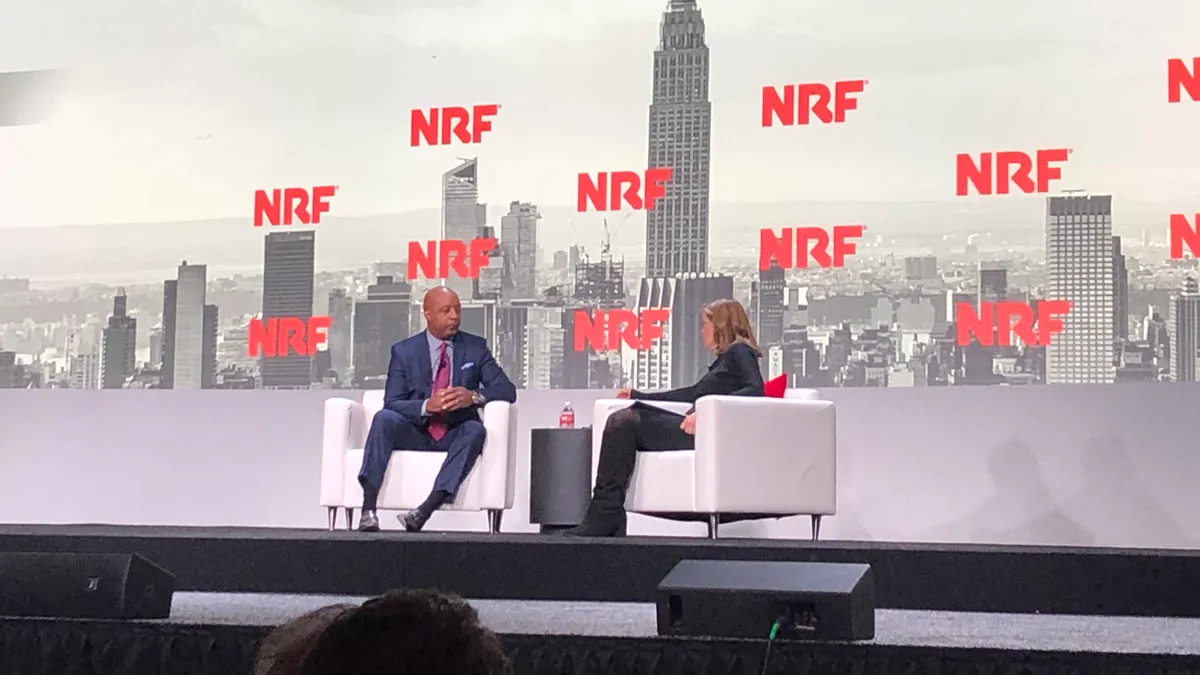Dive Brief:
- Despite remaining a predominant force in home improvement, Lowe's shift in focus threatened its ability to keep up with modern IT and retailers, said CEO Marvin Ellison, while speaking at the National Retail Federation Big Show in New York City Monday.
- Since taking on the CEO role, Ellison implemented a three-pronged approach to transformation beginning with retail fundamentals — including stocked shelves, a powerful supply chain, online capabilities and multichannel offerings. Sustainable growth and "taking market share" will follow once fundamentals are in place, he said.
- Ellison is calling Lowe's ambitions and recent leadership changes "a transformation and not a turnaround" because of its reliable "track record of financial performance."
Dive Insight:
For Ellison, Lowe's has all the qualities needed for success, it just needs to modernize.
The candid CEO has previously said the retailer lost its focus on things that didn't have the expected payouts, causing it to fall behind modern transformations. With so much attention on other endeavors, modern IT, efficient supply chain and allocation of capital lost purpose.
After coming on as CEO in July, the home improvement store underwent an executive overhaul, including its CIO. After seeing five CIOs come and go in eight years, the store lacked a consistent strategy.
Ellison's new line up of executives have extensive experience in retail and technology. He is leading a team that knows how to address the three types of Lowe's customers — the do-it-yourself customer, the "do-it-for-me" customer and the professional customer — in the "same box" and "same digital platform," he said.
The home improvement retailer is planning to invest between $500 and $550 million in capital per year through 2021 on IT. A "historical underinvestment" in technology left Lowe's behind the eight ball of the modern retailer.
Not much has changed in the actual home improvement sector aside from accessibility in terms of customer's digital and mobile preferences, said Ellison. "You want to serve the customer any way they choose to be served," whether that's in-store, online, delivery, purchase or pick-up. However, the change in customer preferences is "not in an abrupt or aggressive shift," he said.
The need for data and data analytics will help the retailer fit the experiences each type of customer needs, and the company is working on better leveraging the data it already possesses.












